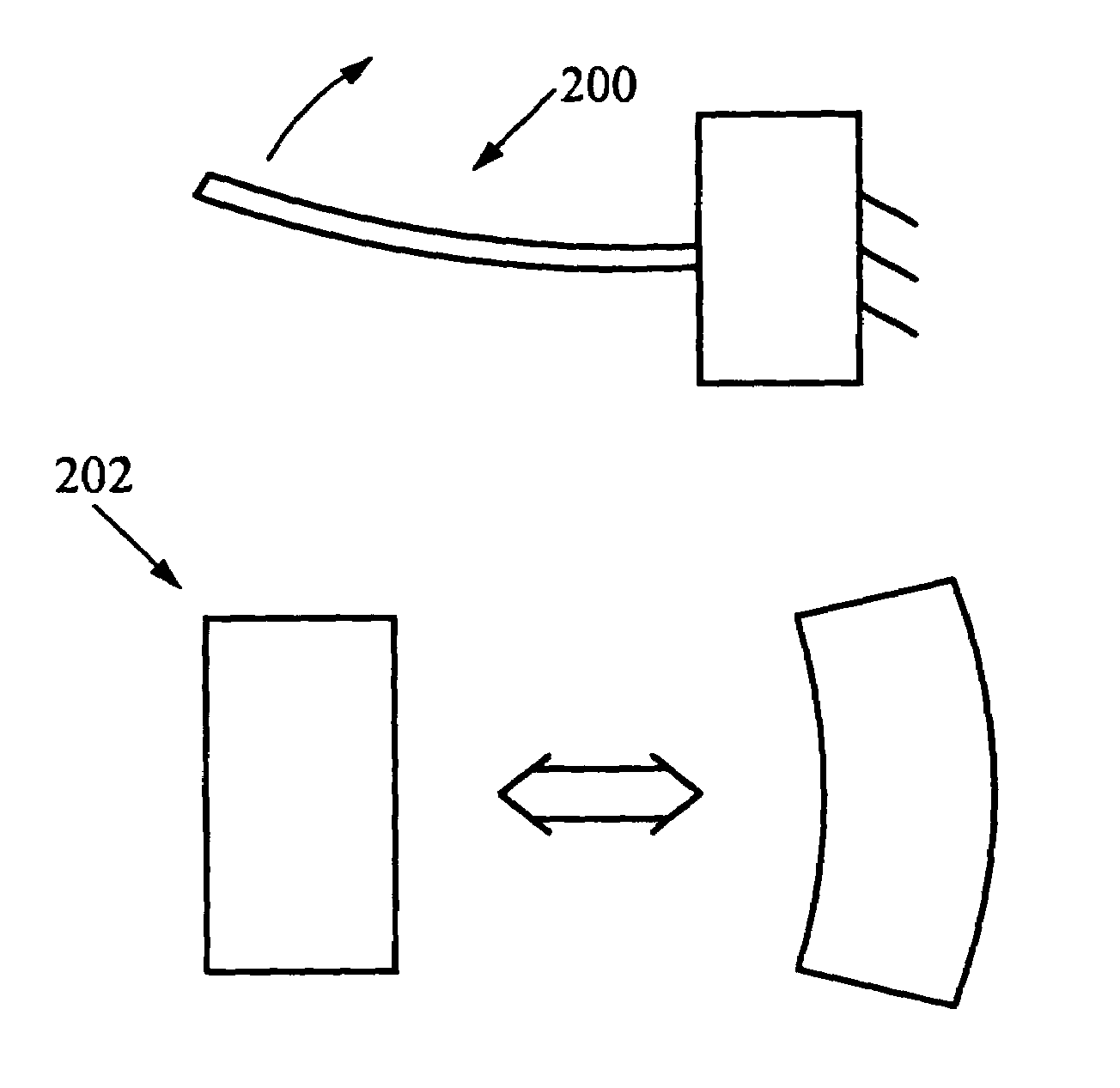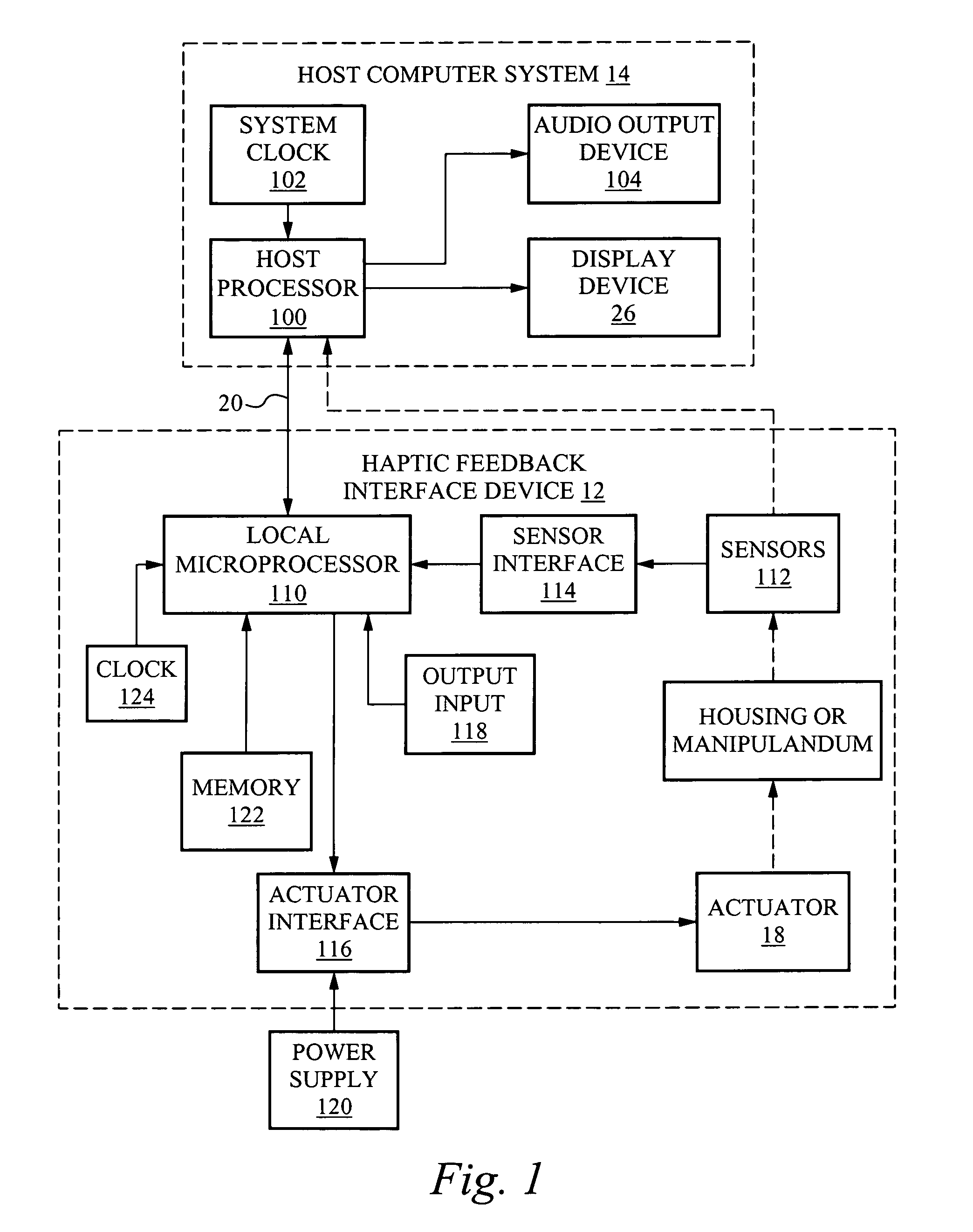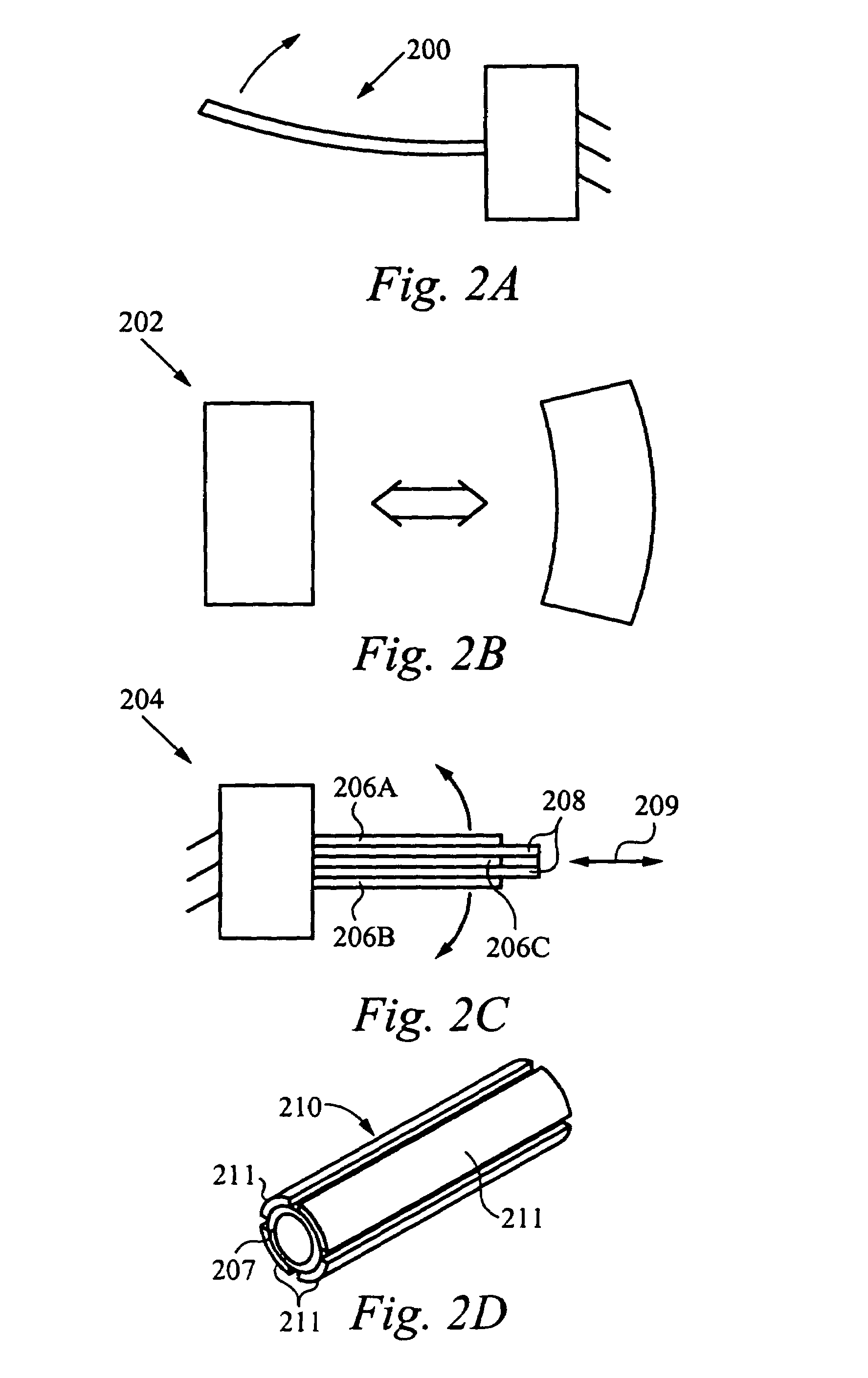Haptic devices using electroactive polymers
a technology of electroactive polymer and haptic device, which is applied in the direction of mechanical control device, manual control with single control member, instruments, etc., can solve the problems of high manufacturing cost of such devices, high device cost, and high device cost for consumers, so as to improve the efficiency of providing haptic sensation and reduce the cost
- Summary
- Abstract
- Description
- Claims
- Application Information
AI Technical Summary
Benefits of technology
Problems solved by technology
Method used
Image
Examples
embodiment 250
[0091]Three general types of haptic feedback are described in relation to the mouse embodiment 250; other types are also possible, and all may be implemented with other types of haptic feedback devices (joysticks, trackballs, steering wheels, laptop sensor pads, etc.). The three general types are button haptic feedback, inertial haptic feedback, and housing motion haptic feedback.
[0092]FIGS. 3a–3c illustrate generally the output of haptic feedback on a button. Button haptic feedback can be provided in several different ways. In FIG. 3a, the EAP actuator is used to provide haptic feedback and actuate motion of a button 256 in the button degree of freedom as shown by the arrow, i.e., in the direction of clicking or moving the button, where the button can be moved to another position as indicated by the dashed lines. The EAP structure (not shown) can, for example, be directly coupled to the button or be coupled to the button via a transmission or intermediate member (spring, flexure, e...
embodiment 590
[0116]FIG. 13 is a side elevational view of a braking embodiment 590 for a rotating disk. Disk 592 rotated about axis C. A caliper 594 is positioned at one end of the disk, and an EAP actuator 596 is coupled to one end of the caliper. The EAP actuator can be moved linearly to move a brake shoe 598 against the spinning cross-sectional surface of the disk, thus causing frictional resistance to the disk. A brake shoe 600 can be positioned on the other end of the caliper 594, opposite the brake shoe 598. The disk can be coupled to a variety of objects, such as a joystick handle or mouse, a rotating finger wheel or knob, or a rotating axle in a vehicle.
[0117]A stylus-shaped interface device can also be provided with an EAP actuator to produce haptic feedback to the user of the stylus. A stylus can be used to point to or select objects on a screen, or draw or write lines by contacting the stylus with a tablet or with a display screen surface, e.g. on Personal Digital Assistants (PDA's), t...
embodiment 620
[0118]FIG. 14b shows a different embodiment 620 that causes a front end portion 622 of the stylus to linearly move with respect to the back portion 624 of the stylus. A rubber bellows 626 can be positioned between the moving front portion and the back portion, and an EAP actuator (not shown) can be positioned inside the stylus housing. The EAP actuator can be a linearly-moving element that is coupled to the front end portion 622 to move that portion similarly to moving the tip member as shown in FIG. 14a. Haptic sensations can be output to the user similarly as described with respect to FIG. 14a.
[0119]Other features of a stylus can also be actuated using EAP actuators. In FIG. 14c, a stylus 640 is shown having a button 642 which can be controlled (by a host computer or other controller) to linearly move back and forth by coupling a linearly moving EAP actuator 644 to the button as shown. The button can be actuated to correspond to interactions between a controlled cursor and other ...
PUM
 Login to View More
Login to View More Abstract
Description
Claims
Application Information
 Login to View More
Login to View More - R&D
- Intellectual Property
- Life Sciences
- Materials
- Tech Scout
- Unparalleled Data Quality
- Higher Quality Content
- 60% Fewer Hallucinations
Browse by: Latest US Patents, China's latest patents, Technical Efficacy Thesaurus, Application Domain, Technology Topic, Popular Technical Reports.
© 2025 PatSnap. All rights reserved.Legal|Privacy policy|Modern Slavery Act Transparency Statement|Sitemap|About US| Contact US: help@patsnap.com



